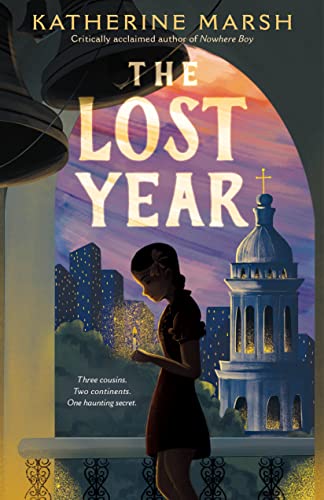The Lost Year: A Survival Story of the Ukrainian Famine
This dual-timeline narrative begins in 2020 with 12-year-old Matthew, homebound because of Covid lockdowns and separated from his journalist father posted to Europe. Because his 100-year-old great-grandmother, known as GG, lives with him, he can’t even see his friends for fear of endangering her. After a bit of destructive horseplay, Matthew’s mother orders him to go through GG’s storage boxes, where he finds letters and photos that contain a shocking secret. Matthew’s chapters are interspersed with Mila’s in Ukraine and Helen’s in Brooklyn in 1932-33. Both girls—GG’s cousins, she says—are 12 years old at the time of the Holodomor, the famine that Soviet leaders imposed on the Ukrainian countryside that led to the starvation of millions. GG, whose name is Nadiya, survived the Holodomor that killed the rest of her family in the countryside. When Nadiya walks to Kyiv, Mila hides her from her father, a Soviet apparatchik who helped to steal farmers’ grain and execute resisters. Helen, safe in Brooklyn with her immigrant family, tries to reconcile news of the famine with the sunny views of the Soviet Union in the mainstream press. She wants to collect evidence to convince Walter Duranty, the notorious Moscow-based New York Times reporter who denied the existence of this genocide.
Marsh, a journalist, explores both the Holodomor and journalistic ethics through the experiences of her three point-of-view characters. While Matthew adds a connection to today’s readers, the stories of Mila and Helen will keep them turning the pages. All the young characters confront a world based on lies, and how each of them recognizes the truth and acts on that knowledge can spark reflection and discussion.










